Dr Dee and the Angels
The Elizabethan Magician Who Scried for the Queen
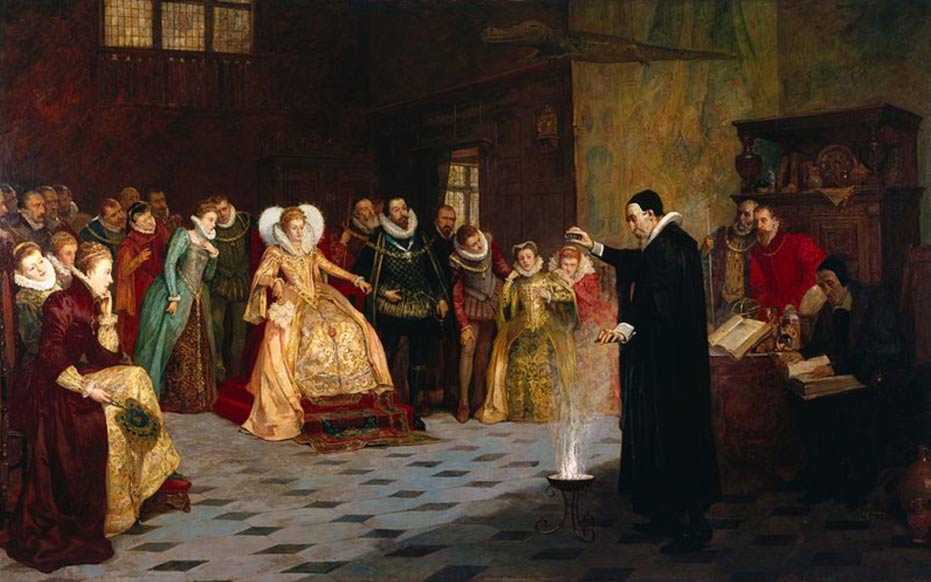
John Dee performing an experiment before
Queen Elizabeth I. [Wellcome
Images, a website operated by Wellcome Trust, a global charitable
foundation based in the UK.]
John Dee: Scholar, Astrologer, and Occult Practitioner that Captivated the Royal Court of 16th Century England
Born into the era of intellectual and artistic reawakening, John Dee quickly rose through Elizabethan society as a scholar, philosopher, navigator, doctor, and astrologer of the Queen of England. Fascinated in so many fields, including a deep fascination with the occult, his vast interests resulted in his unintentional creation of the largest personal library in Elizabethan England at the time, visited by renowned scholars from all over the world. Luckily for modern historians, Dee was a prolific enough writer that his life is well documented, however the way in which he was tasked with so many important roles in the British court is still an incredible dilemma.
John Dee sets sights on the Royal Court
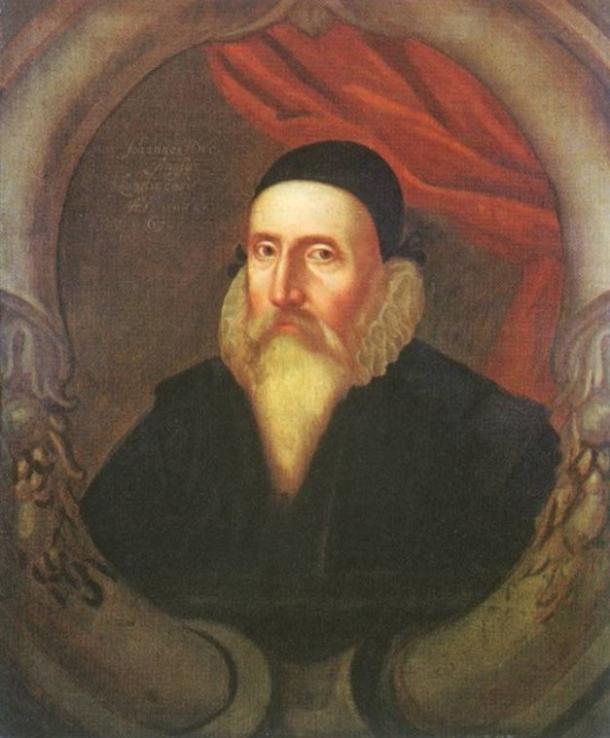
A 16th-century portrait of John Dee by an
unknown artist. Public Domain
His relationship with the royal court, however, turned tumultuous as he became more interested in mathematics and astrology. Queen Mary I had him arrested in 1555 for "calculating", as mathematics and magic were considered close cousins in this time. The charges were of treason and he was imprisoned for a period, until finally exonerated by Bishop Edmund Bonner.
Astrological advisor of Queen Elizabeth I
Rarely discussed in references of the New World, Dee actually helped pioneer the Voyages of Exploration England took on in the sixteenth century, aiding the various ship captains in their mathematical techniques of navigation. It was he who provided the instruments used to navigate the waters, himself being somewhat of a professional in the art of navigation. Driven by a mutual desire to reestablish the great British Empire, Dee and Queen Elizabeth I worked tirelessly in the exploration of North America. By 1583, however, he had given up his work as a navigation specialist, and chose instead to focus on his research into the forces of nature and the supernatural forces of the universe.
The language of angels
Dee wrote his first astrological book called Monas Heiroglyphica in which he discusses the various facets of the symbol he created to represent the cosmos.
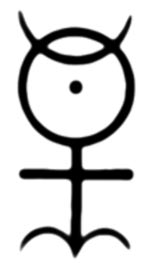
Dee's glyph, whose meaning he explained in
Monas Hieroglyphica as representing (from top to bottom): the moon; the sun;
the elements; and fire. Public Domain
Collaboration with psychic medium
John Dee claims to have the gift of alchemy
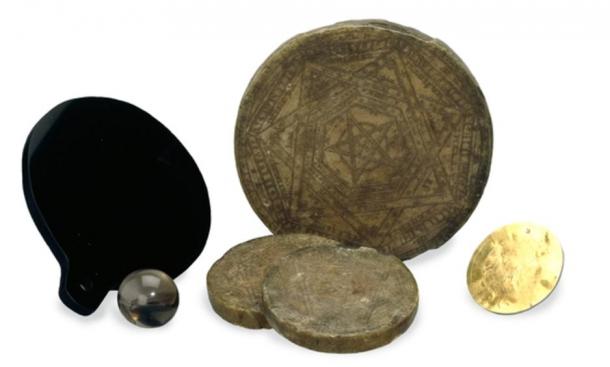
The magical tools of John Dee: golden and wax
discs, a quartz sphere, and a polished mirror. Wikimedia Commons
John Dee: The final years
Over time, Dee's work in the occult became more heavily criticized and, after parting ways with Kelley in 1589, he became Warden of Christ's College in Manchester, England. He died a poor man's death in 1608, having fallen out of favor with Elizabeth I's successor James VI/I.
Yet regardless of the way his life ended, John Dee was considered somewhat of a wizard in Elizabethan circles. Even with so few followers of his angelic endeavors, his work evolved into a modern magical and religious practice that continues to be utilized by occult organizations around the world.
Enochian: The Mysterious Lost Language of Angels
The painting of the three orders of the
Angelic Hierarchy in all their glory: “Assumption of the Virgin” by Botticini,
1475. (manyheadedmonster.wordpress.com)
In the year 1581, occultists John Dee and Edward Kelley claimed to have received communications from angels, who provided them with the foundations of a language with which to communicate with ‘the other side’. This ‘angelic’ language contained its own alphabet, grammar and syntax, which they wrote down in journals. The new language was called "Enochian" and comes from John Dee's assertion that the Biblical Patriarch Enoch had been the last human to know the language.
Dr. John Dee, 1527-1609, was an occultist, mathematician, astronomer and astrologer who lived in Mort Lake, West London for most of his life. An educated man who studied at St. John’s College in Cambridge, was eventually accepted into influential circles of the ruling elite and acted as scientific advisor and confidant to Queen Elizabeth I. He is associated with coining the phrase ‘British Empire’. During the early part of his life, Dee had little interest in the supernatural. Later on, he became disillusioned with science and began experimenting with the occult. Dee was looking to discover lost spiritual knowledge and recover the wisdom he believed was hidden in books of antiquity. Among these books was the then-fabled Book of Enoch, which he conceived as being a book describing the magic system used by the Patriarch in the Bible.
The term Enochian comes from the Biblical figure Enoch, who was a source of hidden mystical knowledge and was taken up to heaven. According to Genesis 5:24, he “walked with God” and Hebrews 11:5 states that he “was taken from this life, so that he did not experience death.”
From 1581 to 1585, Dee began performing a long series of magical events. In 1581, at the age of 54, Dee wrote in his personal journal that God had sent “Good Angels” to communicate directly with mankind. By 1582, he was collaborating with fellow occultist and seer Edward Kelley (1555–1597) to communicate with these angels. Hundreds of spirit conversations were recorded, including what they claimed was an angelic language called Enochian, composed of non-English letters. The Enochian Alphabet was revealed to Dr. John Dee and Edward Kelley during “scrying sessions”, when various texts and tables were received from angels. Scrying is a technique used by seers, psychics, and sorcerers to foretell the future and involves gazing into a reflective surface to receive messages.
It is documented that Dee and Kelley used certain objects such as a black obsidian mirror and a crystal ball to experience these visions. Dee acted as orator, directing prayers to God and the Archangels for 15 minutes to an hour. Then a scrying stone was placed on a table, and the angels were called to manifest themselves. Dee and Kelly would watch the stone and record everything they saw and heard. They were told by the angels that the magic would give superhuman powers to its practitioners, change the political structure of Europe, and herald the coming of the Apocalypse.
Dee believed that what he was doing would be of benefit to posterity and documented the information into a series of manuscripts and workbooks. He never described the language used during the sessions as “Enochian” but preferred to call it “Angelical,” the “Celestial Speech,” the “First Language of God-Christ,” and particularly “Adamical,” because he asserted it was used by Adam in the Garden of Eden to name all of God’s creatures.

John Dee’s obsidian mirror used for ‘scrying’
sessions (British
Museum).
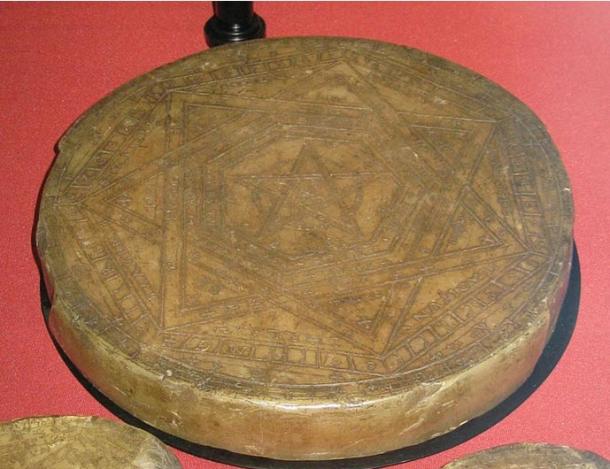
John Dee’s Seal of God (Wikimedia Commons)
The script is written from right to left, and may include accents. The Enochian letters have English letter equivalents with some of the letter names pronounced as they would be in English, but many are pronounced differently. The alphabet is used in the practice of Enochian Magic on Angelical or Enochian Keys. They were received through Edward Kelley in 1584, in Krakow, Poland. That year he wrote into his diaries a series of nineteen magical incantations. The Keys comprise 48 poetic verses and correspond to various functions within the Enochian Magic system. They are given in the original Enochian Language, and a Modern English Translation, based on John Dee’s Old English versions.
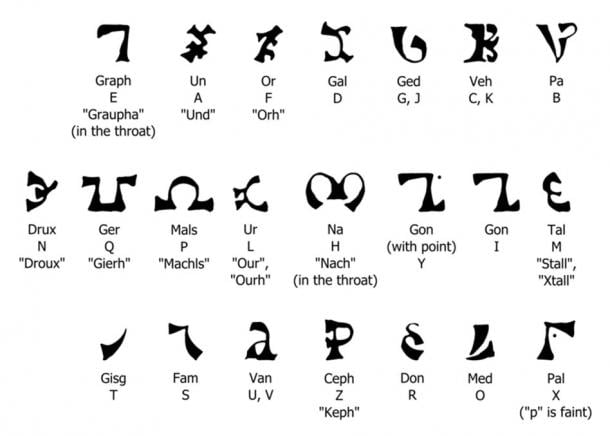
The Enochian letters are read from left to
right, they have letter forms, letter names and some English equivalents. They
are as written from John Dee’s Diary. (Wikipedia.org)
Due to the loss of parts of John Dee’s original manuscripts, interpretations have arisen regarding the meaning, validity, and authenticity behind the Enochian language. Some magicians have asserted it is the oldest language in the world, predating all other human languages. In some circles it is considered among the most powerful strains of magic and is a method of contacting intelligences from other dimensions. Detractors have pointed out that the syntax of Enochian bears a strong resemblance to English, Dee and Kelley’s natural language. Such similarities include the word luciftias, a term meaning “brightness,” which bears a connection to Lucifer, whose name means Light Bringer.” Londoh, the Enochian word for kingdom, might just represent Dee’s connection to his royal patron, the Queen of England. Computer analysis have also shown Enochian to have a grammatical relationship to English. Texts in the Liber Loagaeth demonstrate phonetic features that do not appear in natural languages. The phonetic features are associated more with glossolalia, or speaking in tongues.
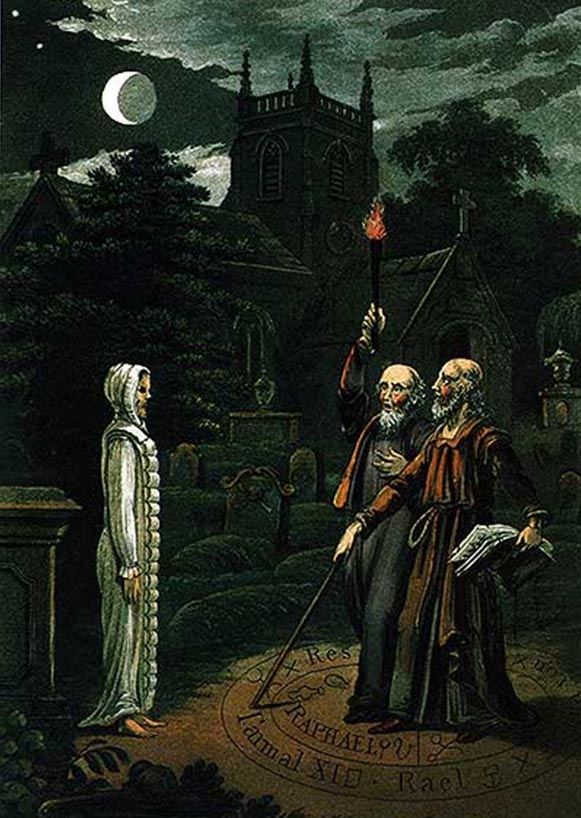
Necromancy: The art of conjuring the dead and
communicating with them, image of John Dee and Edward Kelley. From Astrology
(1806) by Ebenezer Sibly. (Wikipedia.org)
The Enochian language was picked up and popularized by occultists, such as the Hermetic Order of the Golden Dawn, Aleister Crowley, Israel Regardie and Anton LaVey, founder of the church of Satan. Many Satanists have even included Enochian Keys in their rituals, some adopting the entire language for use. The Enochian language was also studied by U.S. rocket scientist Jack Parson of the O.T.O.
In 1994 the Enochian letters were used as glyphs to operate the arc angle in the film 'Stargate', one year before the US remote viewing program, 'Stargate', was made public. Another aspect of modern Enochian magic is Enochian chess. It is both a game and a divination tool, derived from the original tablets of John Dee. It is a complex system that requires a strong foundation in the study of the Qabalah, Geomancy, Tarot, Alchemy, and Astrology. Many of the original items used by Dee and Kelley can be found in the British Museum in London, England.
The Book of Abramelin the Mage, Esoteric Grimoire of Kabbalistic Knowledge
Hermes Trismegistus is the purported author of the Hermetic Corpus, a series of sacred texts that are the basis of Hermeticism. Image Source
Western esoteric thought has its roots in the Late Antique period in the Eastern Mediterranean. This was an area of the world where east met west. Consequently, this was also an area where the religions and intellectual traditions of Babylon, Persia, Egypt, the Levant and Greece were able to intermingle with each other. Through the mingling of these various traditions, schools of esoteric thought distinct from mainstream Christianity, such as Hermeticism, Gnosticism and Neoplatonism, were born. Texts expounding esoteric teaching were written, and these schools of thoughts spread westwards into Europe. In the 14th and 15th centuries, an esoteric grimoire, known as The Book of Abramelin the Mage was written.

Front cover of Mathers’ translation of The
Book of Abramelin the Mage. Wikimedia
The Book of Abramelin the Mage was written as an epistolary novel or autobiography of a person known as Abraham of Worms. Abraham was a German Jew believed to have lived between the 14th and 15th centuries. The Book of Abramelin the Mage involves the passing of Abraham’s magical and Kabbalistic knowledge to his son, Lamech, and relates the story of how he first acquired such knowledge.
Abraham begins his narration with the death of his father, who gave him ‘signs and instructions concerning the way in which it is necessary to acquire the Holy Qabalah’ shortly before his death. Desiring to acquire this wisdom, Abraham said he travelled to Mayence (Mainz) to study under a Rabbi, called Moses, who was well-versed in such studies. Abraham studied under this Rabbi for four years. Abraham commented in retrospect that the teachings of his previous Rabbi were filled with errors, as they contained the ‘arts and superstitions of infidel and idolatrous nations’. Feeling that he was wasting his time with the Rabbi, Abraham travelled for the next six years of his life, eventually reaching Egypt.
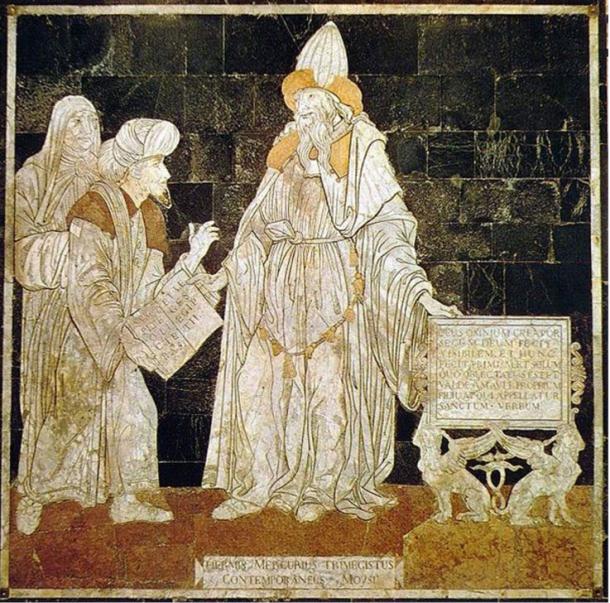
Hermes Mercurius Trismegistus, contemporary
of Moses. Public
Domain
It was in Egypt that Abraham met Abramelin the Mage, an Egyptian mage who was living in the desert outside an Egyptian town called Arachi or Araki. His house was reported to be situated on top of a hill which was surrounded by trees. Abramelin is described as a ‘venerable aged man’, who was courteous and kind. During Abraham’s stay with Abramelin, the mage spoke of nothing other than the “Fear of God”, urged Abraham to lead a “well-regulated life”, warned about “certain errors which man commits through human frailty”, and made Abraham understand that he detested “the acquisition of riches and goods ...through so severe usury exacted from, and harm wrought to, our neighbor”.
Abramelin is said to have then taught Abraham his Kabbalistic magic. Before that, however, Abraham was required to promise to change his manner of life, give up his false dogmas, and live in the Way and Law of the Lord. Having obtained this promise from Abraham, Abramelin then gave him two manuscripts to copy from. Abramelin also asked Abraham for ten gold florins, so that he could distribute them to 72 poor persons in the town. Leaving Abraham to copy the two manuscripts, Abramelin left to distribute the money, returning only 15 days later. The next morning, it is written that Abramelin instructed Abraham to make a ‘confession of his life onto the lord’, and to promise to ‘serve and fear the lord’, as well as to ‘live and die in his most holy law’.
It is through the two manuscripts that Abramelin passed his Kabbalistic knowledge to Abraham, and forms a large section of The Book of Abramelin the Mage. One of the highlights of this grimoire is an elaborate ritual known as the ‘Abramelin Operation’. The proper performance of this ritual is said to enable a mage to gain the ‘knowledge and conversation’ of his/her ‘guardian angel’. Furthermore, the ritual is said to also allow the mage to blind demons. Another section of the grimoire is about ‘magic word squares’, in which each square would contain words or names relating to the magical goal of the square.
The legacy of the writing is far reaching. Due to the English translation of The Book of Abramelin the Mage by Samuel Liddell MacGregor Mathers, this system of Kabbalistic magic became quite popular during the 19th and 20th centuries. Its popularity can be seen in its use in occult organizations such as Hermetic Order of the Golden Dawn and Aleister Crowley’s mystical system of Thelema.
References
Dee, John. "Monas Hieroglyphica ('The Hieorglyphic Monad')." Esoteric Archives. Accessed June 10, 2015. http://www.esotericarchives.com/dee/monad.htm
DuQuette, Lon Milo. Enochian vision magick: an introduction and practical guide to the magick of Dr. John Dee and Edward Kelley (Weiser: Maine, 2008.)
Feingold, Mordechai. "John Dee: English Mathematician." Encyclopedia Britannia. Accessed June 9, 2015. http://www.britannica.com/EBchecked/topic/155467/John-Dee
French, Peter. J. John Dee: the World of an Elizabethan Magus (Routledge: London, 1987.)
Parry, Glyn. "John Dee and the Elizabethan British Empire in Its European Context." The Historical Journal. 49.3. Sept 2006. http://0-www.jstor.org.read.cnu.edu/stable/4091576
Tratter, Walter I. "God and Expansion in Elizabethan England: John Dee, 15227-1583." Journal of the History of Ideas. 25.1. 1964. pp. 17-34. http://0-www.jstor.org.read.cnu.edu/stable/2708083
Wilding, Michael. Raising spirits, making gold, and swapping wives: the true adventures of Dr. John Dee and Sir Edward Kelly (Beeston: United Kingdom, 1999.)
"John Dee." Elizabethan Era. 2015. Accessed June 9, 2015 http://www.elizabethan-era.org.uk/john-dee.htm.
"John Dee." Encyclopedia of Occultism and Parapsychology. 2001. Accessed June 9, 2015. http://www.encyclopedia.com/topic/John_Dee.aspx
"John Dee." St. Andrews' School of Mathematics and Statistics. August 2002. Accessed June 10, 2015. http://www-history.mcs.st-andrews.ac.uk/Biographies/Dee.html
"Enochian Magic." Enochian. November 16, 2009. http://enochian.info/enochian-magic/
"Enochian Keys." Enochian. November 16, 2009. Accessed May 20, 2015. http://enochian.info/enochian-keys
"Enochian Alphabet." Enochian. November 21, 2009. http://enochian.info/enochian-alphabet
"John Dee - Astrologer to the Queen." John Dee - Astrologer to the Queen. http://www.bibliotecapleyades.net/bb/john_dee.htm
"British Museum - Dr John Dee (1527-c1608)." British Museum - Dr John Dee (1527-c1608). http://www.britishmuseum.org/explore/highlights/article_index/d/dr_john_dee_1527-c1608.aspx
Jones, David. "John Dee & the Enochian Apocalypse." New Dawn the World’s Most Unusual Magazine. September 8, 2012.
"Enochian Alphabet." Enochian Alphabet. http://www.omniglot.com/writing/enochian.htm
"Enochian." Enochian. http://self.gutenberg.org/articles/enochian
"HEXEN2039." HEXEN2039. http://ensemble.va.com.au/tableau/suzy/TT_ResearchProjects/Hexen2039/JohnDee/JohnDee.html
Lewis, A. A., 2014. The Book of the Sacred Magic of Abramelin the Mage. [Online]
Available at: http://national-paranormal-society.org/the-book-of-the-sacred-magic-of-abramelin-the-mage/
Mastin, L., 2009. Famous Witches - Abramelin the Mage (15th Century). [Online]
Available at: http://www.witchcraftandwitches.com/witches_abramelin.html
www.sacred-texts.com, 2014. The Book of the Sacred Magic of Abramelin the Mage. [Online]
Available at: http://www.sacred-texts.com/grim/abr/
www.themystica.com, 2014. Sacred Magic of Abramelin the Mage. [Online] Available at: http://www.themystica.com/mystica/articles/s/sacred_magic_of_abramelin_the_mage.html
From Ancient Origins @ http://www.ancient-origins.net/history-famous-people/john-dee-scholar-astrology-and-occult-practitioner-captivated-royal-court-020412
and http://www.ancient-origins.net/artifacts-ancient-writings/enochian-mysterious-lost-language-angels-003100
and http://www.ancient-origins.net/artifacts-ancient-writings/book-abramelin-mage-esoteric-grimoire-kabbalistic-knowledge-002661
For more information about magic see http://nexusilluminati.blogspot.com/search/label/magic
- Scroll down
through ‘Older Posts’ at the end of each section
Hope you like this
not for profit site -
It takes hours of work every day by
a genuinely incapacitated invalid to maintain, write, edit, research,
illustrate and publish this website from a tiny cabin in a remote forest
Like what we do? Please give anything
you can -
Contribute any amount and receive at
least one New Illuminati eBook!
(You can use a card
securely if you don’t use Paypal)
Please click below -
Spare Bitcoin
change?
Xtra Images –
For further enlightening
information enter a word or phrase into the random synchronistic search box @
the top left of http://nexusilluminati.blogspot.com
And see
New Illuminati – http://nexusilluminati.blogspot.com
New Illuminati on Facebook - https://www.facebook.com/the.new.illuminati
New Illuminati Youtube Channel - http://www.youtube.com/user/newilluminati
New Illuminati on Google+ @ For
New Illuminati posts - https://plus.google.com/u/0/+RamAyana0/posts
New Illuminati on Twitter @ www.twitter.com/new_illuminati
New Illuminations –Art(icles) by
R. Ayana @ http://newilluminations.blogspot.com
The Her(m)etic Hermit - http://hermetic.blog.com
DISGRUNTLED SITE ADMINS PLEASE NOTE –
We provide a live link to your original material on your site (and
links via social networking services) - which raises your ranking on search
engines and helps spread your info further!
This site is published under Creative Commons (Attribution) CopyRIGHT
(unless an individual article or other item is declared otherwise by the copyright
holder). Reproduction for non-profit use is permitted
& encouraged - if you give attribution to the work & author and include
all links in the original (along with this or a similar notice).
Feel free to make non-commercial hard (printed) or software copies or
mirror sites - you never know how long something will stay glued to the web –
but remember attribution!
If you like what you see, please send a donation (no amount is too
small or too large) or leave a comment – and thanks for reading this far…
Live long and prosper! Together we can create the best of all possible
worlds…
From the New Illuminati – http://nexusilluminati.blogspot.com

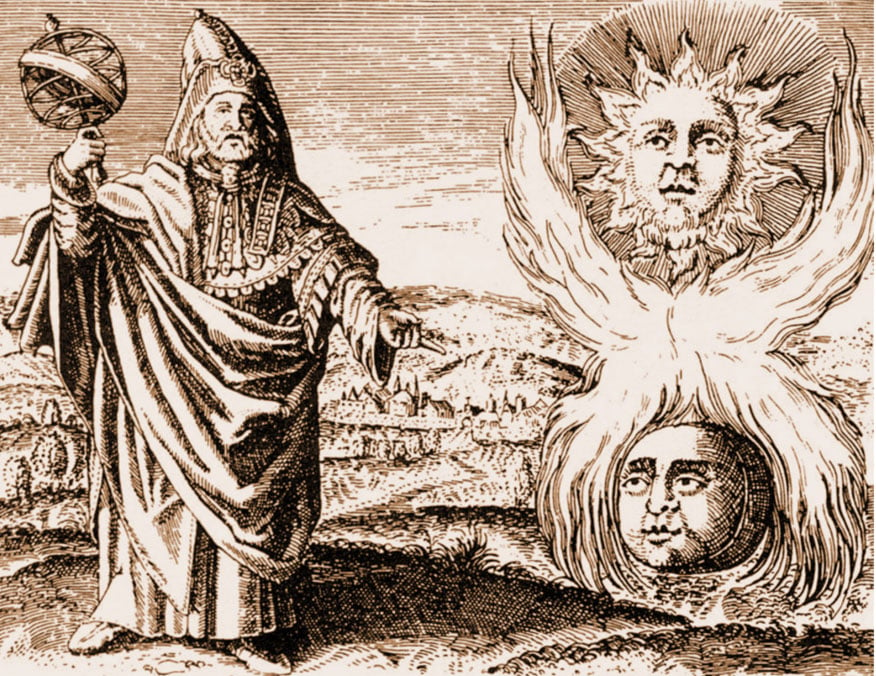
No comments:
Post a Comment
Add your perspective to the conscious collective